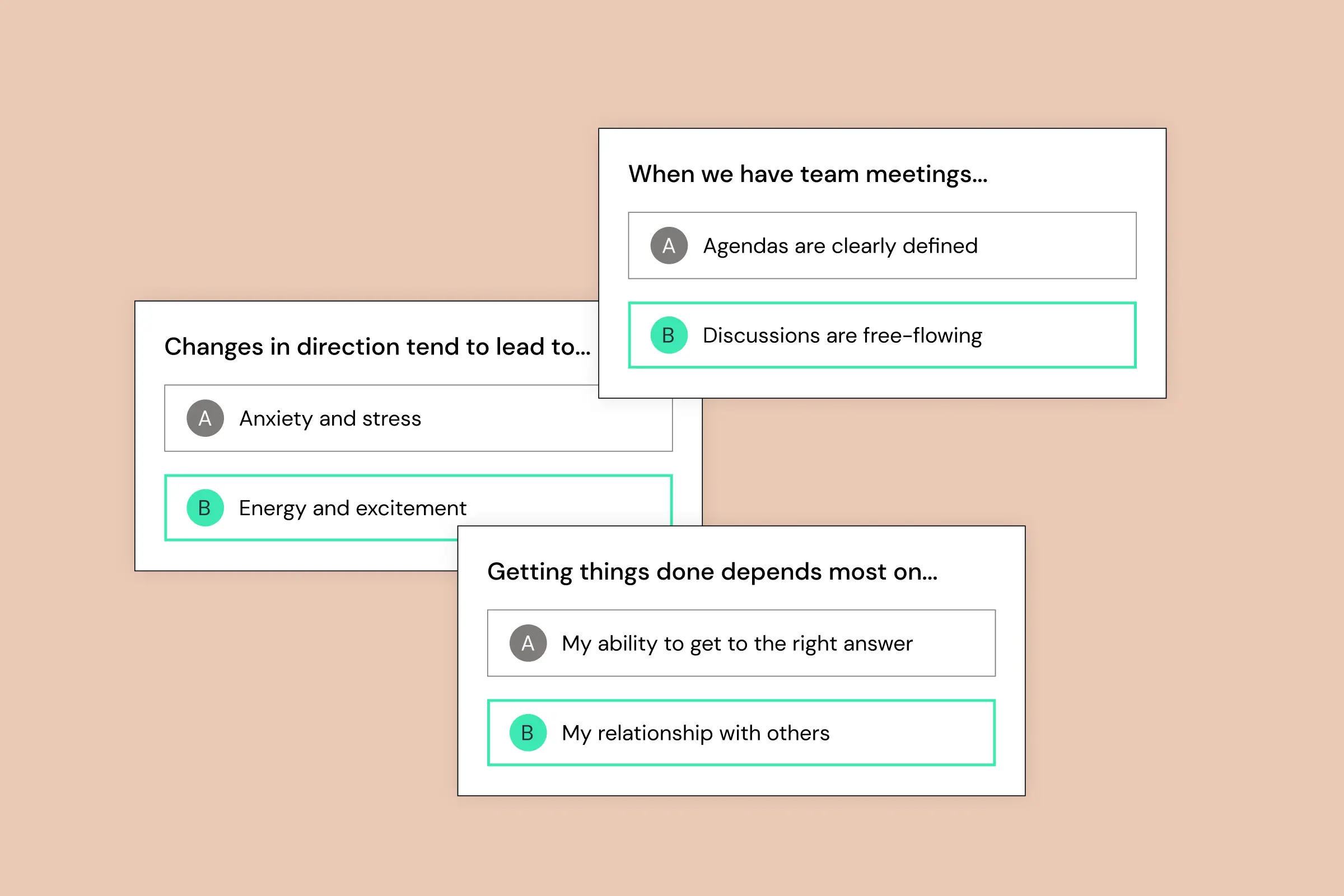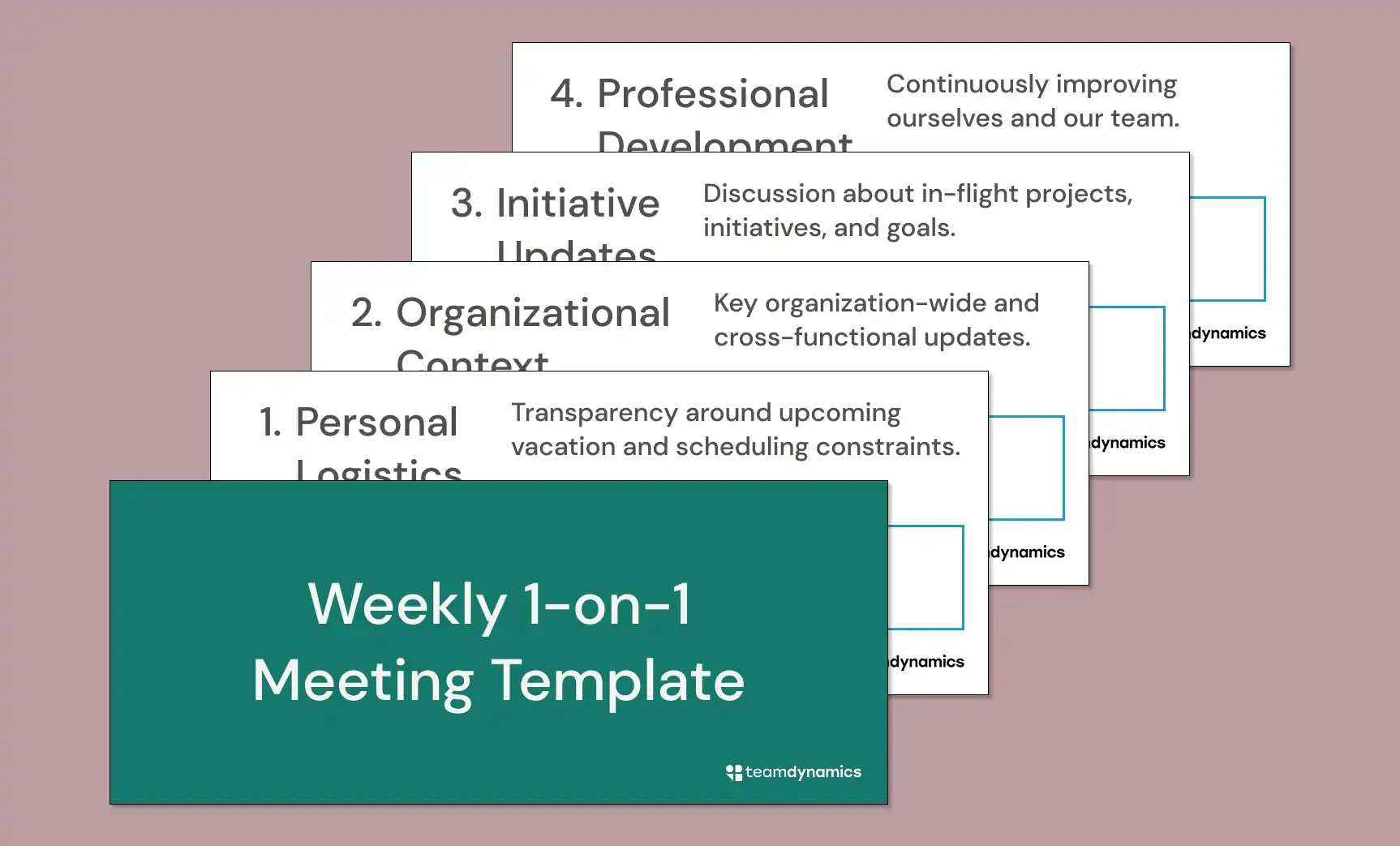Imagine this: You’re working on a tight deadline, juggling multiple tasks, and suddenly, your manager drops a new project on your desk. You feel overwhelmed, but instead of simply accepting the work, you ask a few key questions, clarify priorities, and propose a more efficient way to tackle the project. Your manager appreciates your initiative, and you both end up with a clearer path forward. This is what managing up looks like in action.
Managing up means actively working to make your manager’s job easier while also advancing your own career. It’s about building a productive relationship with your boss, understanding their goals, and finding ways to align your work with those objectives. In today’s fast-paced work environment, managing up isn’t just a nice-to-have skill—it’s essential for anyone looking to get ahead and make a real impact.
In this guide, we’ll break down what it means to manage up, why it’s so crucial, and how you can start doing it effectively. You’ll learn practical strategies to improve your relationship with your manager, real-world examples of managing up in action, and how understanding your team through tools like TeamDynamics can give you an edge. Whether you’re looking to enhance your performance, boost your team’s productivity, or position yourself for the next big promotion, mastering the art of managing up is a key step toward success.
What Does It Mean to Manage Up?
"Can you define managing up?" is a common question, and for good reason.
Managing up is a powerful but often misunderstood concept in the professional world. At its core, managing up is about proactively managing your relationship with your boss to ensure that both you and your manager succeed. It’s not just about doing your job well; it’s about understanding your manager’s goals, priorities, and challenges, and then aligning your efforts to help achieve those objectives.
Managing up definition: Managing up is the practice of proactively aligning your work and communication with your manager’s goals and priorities to enhance both your performance and the team’s success.
Managing up is not the same as being a yes-person. It’s not about agreeing with everything your manager says or doing whatever they ask without question. Instead, it’s about thoughtfully contributing to the team by anticipating needs, offering solutions, and communicating effectively. By doing this, you make your manager’s job easier, and in turn, you position yourself as a valuable asset to the team.
Why Managing Up Matters
Managing up is crucial for several reasons. First, it helps create a more efficient and harmonious workplace. When you understand your manager’s expectations and work to meet them, it reduces friction and misunderstandings. This, in turn, leads to smoother workflows, better decision-making, and improved team dynamics.
Second, managing up is a key component of career growth. When you consistently demonstrate your ability to think ahead, solve problems, and support your manager’s goals, you build a strong reputation as a leader within your organization. This can open doors for promotions, new opportunities, and greater responsibility.
Finally, managing up is beneficial for the entire team. When you help your manager succeed, you also contribute to the success of your team and organization. It creates a positive ripple effect, where everyone is more aligned, productive, and motivated.
Understanding how to manage up effectively is a skill that can set you apart in your career. By focusing on building a strong relationship with your manager, aligning your work with their goals, and continuously improving communication, you not only help your manager and team succeed but also pave the way for your own professional advancement.
Key Strategies for Managing Up
Managing up effectively requires a combination of insight, initiative, and communication. Here are some key strategies to help you get started:
1. Understand Your Manager’s Goals and Priorities
To manage up successfully, you need to have a clear understanding of what your manager is trying to achieve. Take the time to learn about their goals, both short-term and long-term. Ask questions to clarify their priorities, and pay attention to the projects or tasks they focus on the most. This knowledge will allow you to align your work with what matters most to them.
For example, if your manager is focused on hitting specific sales targets this quarter, you can prioritize tasks that directly contribute to those goals. By doing so, you demonstrate that you’re not just completing your assignments—you’re actively supporting the bigger picture.
Looking for a template for your regular 1-on-1 meetings? Check out our free weekly 1-on-1 meeting template.
2. Be Proactive and Take Initiative
One of the most effective ways to manage up is by taking initiative. Don’t wait for your manager to assign tasks or tell you what to do next. Instead, anticipate what needs to be done and offer solutions before being asked. This proactive approach not only eases your manager’s workload but also shows that you’re a self-starter who can think ahead.
For instance, if you notice a recurring issue in a project, propose a solution before it becomes a bigger problem. Or, if you have an idea for improving a process, bring it to your manager’s attention with a clear plan of action. Taking initiative in this way demonstrates leadership and can significantly enhance your professional reputation.
3. Communicate Effectively
Clear and consistent communication is the backbone of managing up. Make sure you’re regularly updating your manager on your progress, sharing any challenges you encounter, and asking for feedback. Effective communication helps prevent misunderstandings and ensures that both you and your manager are on the same page.
A good practice is to provide regular status updates, either through brief emails or in-person check-ins. This keeps your manager informed without requiring them to chase you for information. Additionally, don’t hesitate to clarify expectations or ask for guidance when needed—this shows that you’re engaged and committed to delivering quality work.
{{inline-cta}}
4. Anticipate Needs and Solve Problems
One of the most valuable things you can do as an employee is to anticipate your manager’s needs before they even realize them. This might involve thinking about upcoming challenges, identifying potential roadblocks, or spotting opportunities for improvement. By being one step ahead, you make it easier for your manager to navigate their responsibilities and make better decisions.
For example, if you know your manager is preparing for an important presentation, you could offer to help gather data, create slides, or proofread the content. Or, if you foresee a potential issue with a project timeline, raise it early and suggest solutions. Anticipating needs and solving problems in this way can make you indispensable to your team.
Examples of Managing Up in Different Scenarios
Managing up can take many forms depending on the situation. Here are 10 examples that cover a range of scenarios, from when things are going smoothly to when challenges arise. Each example shows how managing up is beneficial and highlights potential pitfalls to avoid.
1. Aligning with Your Manager’s Vision
Scenario: Your manager is focused on launching a new product, and you’ve been assigned to handle the marketing strategy.
- Managing Up: You take the initiative to research market trends and propose a marketing plan that aligns with the product’s vision and target audience.
- Benefit: By showing that you understand and support your manager’s goals, you build trust and demonstrate your strategic thinking.
- Pitfall: Avoid pushing your own agenda too strongly without considering your manager’s feedback, as this can come across as self-serving rather than supportive.
2. Taking Initiative on a New Project
Scenario: Your manager is swamped with multiple projects and hasn’t assigned tasks for an upcoming initiative.
- Managing Up: You proactively draft a project plan, including timelines, responsibilities, and key milestones, and present it to your manager for approval.
- Benefit: This shows that you can lead and manage projects independently, easing your manager’s workload.
- Pitfall: Be careful not to overstep by making decisions without your manager’s input. Always present your plan as a draft for discussion, not a final decision.
Kicking off a new project? Check out our project kickoff meeting template.
3. Proactive Communication During a Crisis
Scenario: A key team member suddenly quits, and your manager is scrambling to reassign tasks and meet deadlines.
- Managing Up: You step in to help by offering to take on additional responsibilities and suggesting ways to redistribute the workload among the team.
- Benefit: This proactive approach helps stabilize the team during a crisis and shows that you’re a reliable problem-solver.
- Pitfall: While it’s good to step up, be mindful of your own limits. Don’t overcommit or take on more than you can handle, as this could lead to burnout.
4. Anticipating a Manager’s Needs Before a Big Meeting
Scenario: Your manager has an important meeting with senior leadership and is preparing a detailed presentation.
- Managing Up: You anticipate their needs by gathering relevant data, creating visually appealing slides, and rehearsing potential questions and answers with them.
- Benefit: This support ensures your manager is well-prepared and confident going into the meeting, reflecting positively on both of you.
- Pitfall: Avoid being too intrusive. Offer your help, but don’t insist if your manager prefers to handle certain aspects themselves.
5. Offering Solutions During a Conflict
Scenario: There’s a disagreement within the team about how to proceed with a project, and tensions are rising.
- Managing Up: You manage up by mediating the discussion, finding common ground, and proposing a compromise that addresses the concerns of all parties involved.
- Benefit: This approach helps resolve the conflict quickly, maintains team morale, and positions you as a leader.
- Pitfall: Be careful not to take sides or impose your own solution without considering everyone’s input, as this can lead to further discord.
6. Providing Constructive Feedback to Your Manager
Scenario: Your manager’s new strategy is causing confusion among the team, and morale is dipping.
- Managing Up: You manage up by providing honest, constructive feedback to your manager, suggesting ways to clarify the strategy and improve communication.
- Benefit: This helps your manager make necessary adjustments, improving team cohesion and effectiveness.
- Pitfall: Approach this delicately. Frame your feedback positively and be sure to offer solutions, not just criticism.
Looking for some help giving effective feedback? Check out our guide for using ChatGPT to provide better feedback.
7. Supporting Your Manager During Organizational Change
Scenario: The company is going through a major reorganization, and your manager is struggling to adapt to new processes.
- Managing Up: You offer to help by learning the new systems quickly and sharing your knowledge with your manager and the team.
- Benefit: Your willingness to adapt and support others helps ease the transition and ensures that your team remains productive.
- Pitfall: Don’t come across as a know-it-all. Be humble and collaborative in your approach, offering assistance without undermining your manager’s authority.
8. Managing Up During a Performance Review
Scenario: Your annual performance review is coming up, and you want to ensure it’s a productive discussion.
- Managing Up: You prepare by gathering evidence of your accomplishments, setting clear goals for the future, and proposing areas where you could take on more responsibility.
- Benefit: This preparation shows that you’re committed to your growth and eager to contribute more to the team’s success.
- Pitfall: Be careful not to overwhelm your manager with too much information. Keep your points concise and focused on your most significant contributions.
Looking for help during your review cycle? Check out our free self-evaluation performance review template.
9. Navigating Unclear Expectations
Scenario: Your manager gives you a project with vague instructions, leaving you uncertain about how to proceed.
- Managing Up: You seek clarification by asking specific questions about the project’s objectives, deadlines, and desired outcomes.
- Benefit: Clarifying expectations upfront prevents misunderstandings and ensures that you deliver exactly what your manager wants.
- Pitfall: Avoid being overly dependent. Try to propose potential approaches or solutions when asking for clarification, showing that you’ve put thought into the task.
10. Handling a Mistake Transparently
Scenario: You make a mistake on a project that could impact the team’s progress.
- Managing Up: You immediately inform your manager of the error, take responsibility, and suggest corrective actions to fix the issue.
- Benefit: Handling mistakes transparently builds trust and demonstrates accountability, which is crucial for strong working relationships.
- Pitfall: Don’t just report the problem—always come with a solution. Avoid downplaying the mistake or blaming others, as this can damage trust.
"What does manage up mean?" These examples illustrate the definition of managing up, as well as how managing up can be applied in various situations to improve team dynamics, enhance your relationship with your manager, and advance your career. By being proactive, communicative, and solution-oriented, you can manage up effectively, even in challenging scenarios. Remember, the key is to strike a balance between supporting your manager and maintaining your own professional integrity.
Common Mistakes to Avoid When Managing Up
Managing up is a valuable skill, but it can be tricky to get right. Managing up, meaning building a stronger relationship with your manager and helping the team succeed, comes with common pitfalls that can undermine your efforts if you’re not careful. Here are some mistakes to watch out for:
1. Overstepping Boundaries
Taking too much control or making decisions without consulting your manager can come across as overstepping your role. While initiative is important, it’s crucial to remember that your manager is still in charge.
How to Avoid It: Always keep your manager in the loop, especially on major decisions. Frame your ideas as suggestions or drafts for discussion, and seek their input before moving forward. This ensures you’re being proactive without overstepping.
2. Misalignment with Your Manager’s Goals
Focusing on tasks or projects that aren’t aligned with your manager’s top priorities can lead to wasted effort and frustration on both sides. You might be working hard, but if it’s not on what matters most to your manager, it won’t be appreciated.
How to Avoid It: Regularly check in with your manager to ensure your work aligns with their current goals. Ask for clarity on priorities if you’re unsure, and adjust your focus as needed to stay aligned with what’s most important.
3. Being Overly Eager to Please
Trying too hard to please your manager by agreeing with everything they say or never pushing back can make you seem insincere or even undermine your credibility. Managers value honesty and critical thinking, not just compliance.
How to Avoid It: Don’t be afraid to voice your opinions or raise concerns when necessary. Constructive feedback and alternative perspectives are valuable, but make sure to present them respectfully and with the intention of improving the team’s outcomes.
4. Poor Communication
Failing to communicate effectively with your manager can lead to misunderstandings, missed deadlines, or a lack of trust. Whether it’s not keeping your manager updated on your progress or not seeking clarification on tasks, poor communication can derail your efforts to manage up.
How to Avoid It: Establish regular check-ins with your manager, whether through brief updates, meetings, or emails. Make sure you understand their expectations clearly, and don’t hesitate to ask questions if something is unclear. Consistent, transparent communication is key.
5. Taking on Too Much
In an effort to manage up, you might take on more responsibilities than you can handle. While it’s great to show initiative, overloading yourself can lead to burnout, decreased performance, and ultimately letting your manager down.
How to Avoid It: Be realistic about your capacity and time. It’s better to excel at a few tasks than to struggle with too many. If you’re offered additional work, assess your current workload and discuss priorities with your manager to ensure you’re focusing on the most critical tasks.
6. Failing to Understand Your Manager’s Style
Not taking the time to understand your manager’s communication style, decision-making process, or work preferences can lead to friction and misunderstandings. Every manager has their unique way of working, and failing to adapt to that can make managing up more challenging.
How to Avoid It: Observe your manager’s style and adapt your approach accordingly. Do they prefer detailed reports or quick bullet points? Do they like to be involved in every step, or do they trust you to run with tasks? Tailoring your approach to their style makes managing up smoother and more effective.
7. Undermining Your Manager’s Authority
In an effort to show leadership or take initiative, you might unintentionally undermine your manager’s authority by making decisions that should be theirs or by speaking for them without their approval.
How to Avoid It: Always respect the chain of command. When you have ideas or suggestions, present them to your manager and let them take the lead in deciding how to move forward. Ensure that your actions support, rather than challenge, their authority.
8. Lack of Patience
Expecting immediate results or recognition from managing up can lead to frustration if things don’t move as quickly as you’d like. Managing up is a long-term strategy that requires patience and consistency.
How to Avoid It: Focus on building a strong, trusting relationship with your manager over time. Recognize that the benefits of managing up, such as increased responsibility and career growth, may not be immediate but will come with sustained effort.
9. Ignoring Team Dynamics
Focusing solely on managing up while neglecting your relationships with peers can create tension within the team. If your colleagues feel you’re trying to gain favor with the boss at their expense, it can lead to resentment and a toxic work environment.
How to Avoid It: Balance managing up with managing across. Maintain strong, collaborative relationships with your teammates, and ensure your efforts to manage up are aligned with the overall team’s goals and success.
10. Forgetting to Manage Yourself
In your efforts to manage up, you might neglect your own professional development or well-being. If you’re constantly focused on supporting your manager, you could miss opportunities to grow your own skills or burn out from overwork.
How to Avoid It: Set aside time for your own development, whether that’s through training, networking, or self-reflection. Managing up should be part of a balanced approach to your career, not your sole focus. Remember to manage yourself first, so you can effectively manage up and contribute to your team’s success.
By avoiding these common mistakes, you can manage up effectively, building a strong, positive relationship with your manager while also advancing your career. Remember, the goal of managing up is to create a win-win situation where both you and your manager succeed, leading to a more productive and harmonious work environment.
How TeamDynamics Can Help You Manage Up
Successfully managing up requires a deep understanding of not only your manager’s goals and priorities but also the dynamics of your entire team. This is where TeamDynamics becomes an invaluable tool. By measuring your team’s existing behaviors across the most important dimensions of team behavior—communicating information, turning information into insights, making decisions, and executing plans—TeamDynamics gives you a comprehensive user guide to how your team operates.
Wondering what you get with TeamDynamics? Check out a sample TeamDynamics report.
Here’s how TeamDynamics can specifically help you manage up more effectively:
1. Understanding Communication Styles
One of the key aspects of managing up is effective communication. However, not everyone communicates in the same way, and understanding the preferred communication style of your manager and team can make a significant difference. TeamDynamics helps you identify how information is typically communicated within your team, whether your manager prefers detailed reports, quick updates, or face-to-face discussions.
By aligning your communication style with what works best for your manager, you can ensure your messages are received clearly and efficiently. This not only makes you more effective in managing up but also helps to prevent misunderstandings and build stronger working relationships.
2. Turning Information into Insights
Managing up isn’t just about sharing information; it’s about providing insights that help your manager make better decisions. TeamDynamics helps you understand how your team processes information and derives insights from it. Knowing how your manager and team prefer to analyze data and draw conclusions enables you to present your ideas in a way that resonates with them.
For instance, if your manager values data-driven insights, you can use this knowledge to back up your proposals with relevant data and trends. If they prefer a more intuitive approach, you might focus on the big picture and potential impacts. By tailoring your approach, you not only manage up more effectively but also position yourself as a strategic thinker who contributes valuable insights.
3. Aligning with Decision-Making Processes
Every manager has a unique decision-making style, and understanding this is crucial for managing up. TeamDynamics provides insights into how decisions are typically made within your team. Does your manager prefer to consult the team and gather input before making a decision, or do they make quick, decisive calls?
Armed with this knowledge, you can align your contributions with your manager’s decision-making process. For example, if your manager values team consensus, you can facilitate discussions that gather diverse perspectives before presenting your recommendation. If they prefer quick decisions, you can focus on providing clear, actionable options. This alignment not only helps you manage up more effectively but also ensures that your ideas are more likely to be accepted and acted upon.
4. Executing Plans with Precision
Executing plans effectively is a critical part of managing up. TeamDynamics helps you understand how your team approaches execution—whether they value detailed planning, agile adaptation, or a balance of both. Understanding this can help you anticipate your manager’s expectations and deliver results that align with their preferred execution style.
For example, if your manager prefers a structured, step-by-step approach, you can provide detailed project plans with clear milestones and timelines. If they prefer a more flexible approach, you might focus on delivering key outcomes while remaining adaptable to changes. By aligning your execution style with your manager’s preferences, you demonstrate your ability to deliver results in a way that supports their vision and goals.
5. Leveraging Individual Preferences for Better Collaboration
TeamDynamics also helps you understand your own preferences and how they relate to your team’s overall behavior. This self-awareness allows you to play to your strengths while managing up. For example, if you’re particularly strong in turning information into actionable insights, you can position yourself as the go-to person for analysis and strategy, which can be a valuable asset to your manager.
Additionally, understanding the preferences of your colleagues allows you to navigate team dynamics more effectively. By knowing how to collaborate with others, you can help facilitate smoother interactions and contribute to a more cohesive team, which ultimately reflects well on your ability to manage up. Learn more about the 16 TeamDynamics.
Conclusion
What does managing up mean? Managing up is about more than just understanding your manager—it’s about understanding the entire team dynamic and using that knowledge to enhance communication, decision-making, and execution. TeamDynamics gives you the tools to do just that. By providing a clear picture of how your team works, TeamDynamics empowers you to manage up more effectively, helping you to better support your manager, contribute to the team’s success, and position yourself for career growth.
With TeamDynamics, you have a user guide to how your team functions, which can be a game-changer in your efforts to manage up. Whether you’re navigating complex team interactions, anticipating your manager’s needs, or striving to deliver results that align with team goals, TeamDynamics equips you with the insights needed to get ahead at work. Try TeamDynamics for free today.




.png)





































